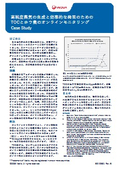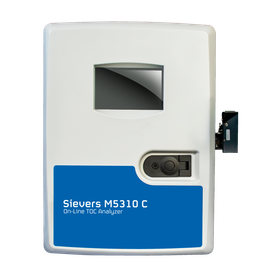Water quality monitoring device (TOC and boron) for ultrapure water production equipment for semiconductors.
Optimal for quality control of ultrapure water (UPW) systems in semiconductor manufacturing. A series of analytical devices that continuously monitor trace concentrations of TOC and boron with high precision.
Product lineup according to purpose: Corresponding to each process such as raw water, RO water, reclaimed water, UF/EDI, and use points.
basic information
【Gas Permeable Membrane Conductivity Measurement Method】 ・Sievers M9e Measurement Range: 0.03 ppb to 50 ppm Measurement Time: 2 minutes ・Sievers M9e Turbo Mode Measurement Range: 0.20 ppb to 10 ppm Measurement Time: 4 seconds ・Sievers M9e Measurement Range: 0.03 ppb to 2.5 ppm Measurement Time: 3 minutes 【Direct Conductivity Measurement Method】 ・CheckPoint e Measurement Range: 0.05 ppb to 5 ppm Measurement Time: 15 seconds 【Boron Meter for UPW】 ・Sievers Boron Ultra Measurement Range: 0.010 to 100 ppb B Measurement Time: 3 minutes or 6 minutes
Price range
Delivery Time
Model number/Brand name
Sievers TOC Analyzer - Boron Ultra Series | Analysis Device for Monitoring Ultrapure Water (UPW)
Applications/Examples of results
Quality control of UPW systems in semiconductor manufacturing Monitoring TOC/boron concentration of raw water, RO water, and reclaimed water Detection of ion exchange resin degradation Troubleshooting and regular diagnostics
Detailed information
-

**Sievers' Unique Gas Permeable Membrane Conductivity Measurement Method** In the conductivity measurement method of the TOC analyzer, the conductivity indicated by the carbon dioxide (carbonate ions) produced after the oxidation and decomposition of organic matter is measured to calculate the carbon concentration. The Sievers TOC analyzer employs a separation measurement mechanism for carbon dioxide called the "gas permeable membrane module," which uses a thin Teflon film to separate carbon dioxide from the sample water into the pure water line within the analyzer, enabling accurate TOC measurements free from the influence of other ions.
-

The Sievers M9e online/portable model can accommodate various applications due to its unique gas-permeable membrane conductivity measurement method and wide measurement range (0.03 ppb to 50 ppm). The optional turbo mode (analysis time of 4 seconds) is useful for monitoring recovered water. Features of the Sievers M9e: - Three models: lab type/portable type/online type - Stability in ultra-low concentration range - Automatic operation (calibration/verification/data analysis, etc.) - 12 months of calibration stability
-

The Sievers M500e is a reagent-free online TOC analyzer for UPW (Ultrapure Water) designed for low concentration ranges (0.03 ppb to 2.5 ppm). Features of the Sievers M500e: - Detects organic acids and organic nitrogen compounds that pose significant risks to water quality using gas-permeable membrane conductivity measurement technology. - Capable of measuring low DO water and hydrogen water. - Intuitive operation via a 10-inch touchscreen. - Isopropanol 100 ppb verification protocol. - Adaptive auto-zero function that automatically adjusts to changes in water quality.
-

Sievers CheckPoint e is a TOC sensor with DC technology that is useful for diagnosing/troubleshooting UPW systems. Features of Sievers CheckPoint e: - Direct conductivity measurement method - Lightweight (3.6 kg) and easy to carry - Compatible with both pressurized and non-pressurized samples
-

【Online UPW Boron Meter Sievers Boron Ultra】 The only device capable of real-time monitoring of boron in UPW at ppt levels. Features of Sievers Boron Ultra: - Performance comparable to ICP-MS - Detection ahead of silica - Efficient deionization control
Related Videos
Line up(4)
| Model number | overview |
|---|---|
| TOC Analyzer Sievers M9e | Application: Raw Water/RO Water/Recovery Water |
| Online TOC Analyzer Sievers M500e | Application: UPW/Secondary Pure Water System |
| TOC Sensor Sievers CheckPointe | Application: Diagnostics/Troubleshooting |
| Online UPW Boron Meter Sievers Boron Ultra | Application: Optimization of Resin Regeneration/Replacement Timing in Ion Exchange Resins and EDI |
catalog(6)
Download All CatalogsNews about this product(1)
Recommended products
Distributors
Since our establishment in 1967, we have been dedicated to the development and dissemination of water quality measurement devices that anyone can use quickly, easily, and with high precision. In today's world, where the effective use of water, a limited resource, is required alongside environmental conservation, we aim to be a total solution provider that responds to all water environments by utilizing our water quality measurement devices, technology, and services. Furthermore, leveraging the latest technology and years of know-how, we are committed to delivering user-friendly and reliable water quality measurement devices more affordably, quickly, and widely.






























































